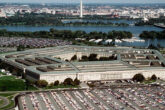February 20, 2018
The True Cost of Trump’s National Defense Strategy
On January 20, the U.S. Department of Defense released the Trump administration’s National Defense Strategy, followed nearly a month later by the president’s budget request for fiscal year 2019. Happily, the two are reasonably well aligned, an outcome that is never assured given how disconnected the processes of strategy formulation and budget building can be. Both documents clearly prioritize strategic competition with China and Russia. But good strategy involves decisions not only about what to prioritize but what not to. Unfortunately, neither document makes clear what missions the Department of Defense is going to end or deemphasize in order to shift focus to this new and very resource-intensive top priority of “expanding the competitive space” against countries investing heavily in high-end capabilities designed to limit U.S. freedom of action (known as “anti-access/area-denial” capabilities). This omission is a problem. As large as the expected increase for defense spending is in fiscal years 2018 and 2019, it is still not enough to cover everything.
In his remarks rolling out the request for the increase, David L. Norquist, the chief financial officer and controller at the Department of Defense, emphasized that this new budget was shaped by the new strategy, despite its concurrent construction. How large the defense budget needs to be depends on what the body politic wants the force to be able to do, which is the subject of the strategy. Budgets are not strategic documents, but when done correctly they are a necessary component of making a strategy real.
Read the full article in Foreign Affairs.
More from CNAS
-
The Department of Defense’s Breakthrough Nuclear Moment Risks Slipping Away
Unless they act, the Department of Defense’s breakthrough nuclear moment may vanish before it really happens....
By Will Rogers
-
DEFAERO Strategy Series [Apr 09, 25] CNAS' Becca Wasser and Phil Sheers on Revitalizing the U.S. Defense Industrial Base
On this episode of the Defense & Aerospace Report Strategy Series, sponsored by General Atomics Aeronautical Systems, Becca Wasser and Phil Sheers of the Center for a New Amer...
By Becca Wasser & Philip Sheers
-
From Production Lines to Front Lines
Executive Summary The U.S. defense industrial base (DIB) is struggling to meet the demands of the current strategic environment—let alone prepare for a potential conflict agai...
By Becca Wasser & Philip Sheers
-
The Pentagon’s Endangered Brain Trust
In this environment, sound assessments of emerging threats and new ideas to counter them will be especially vital....
By Dr. Andrew Krepinevich, Jr.




